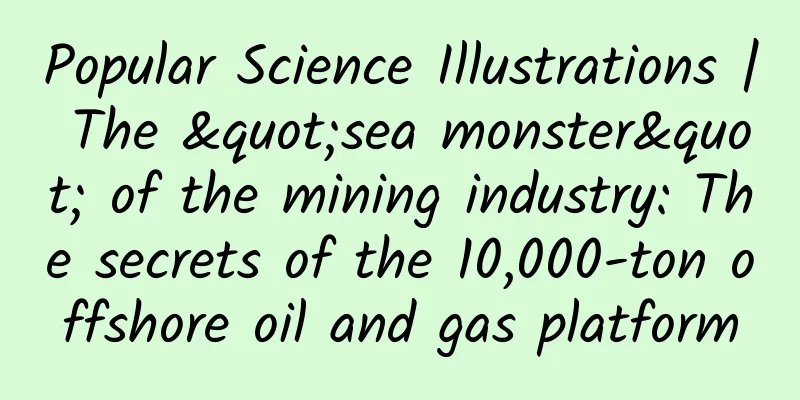Does clean energy have bugs? Too much can’t be stored! Technology coupling may be “fixed”

|
In September, the "International Forum on Carbon Peak and Carbon Neutrality (2024) and International New Energy Expo" co-organized by the China Energy Research Society and the Changzhou Municipal Government kicked off in Changzhou. Image source: CCTV.com The energy sector is the main battlefield for achieving the "3060 dual carbon" goal. Coal-fired power, as the mainstay of my country's electricity supply, will not change for a long period of time in the future, but it will emit a large amount of carbon dioxide. Making full use of new energy sources such as wind and solar energy is an important path for the low-carbon transformation of electricity. However, these new energy sources have "bugs" that cannot be ignored. 01 Is there a “ bug ” in clean energy ? Although green energy such as wind energy and solar energy has the advantages of being clean and low-carbon, after being converted into electricity, like coal-fired power, they also have the disadvantage of not being able to be stored on a large scale and need to be further converted into other chemical energy or potential energy or mechanical energy. Solar cell panels (copyrighted images from the gallery, reprinting may lead to copyright disputes) To solve this problem, scientists have proposed the idea of converting hydrogen into ammonia and methanol - mixing the hydrogen produced by green electricity electrolysis of water with nitrogen in the air or carbon dioxide produced by thermal power plants in proportion, compressing it and then reacting it under catalytic conditions to produce ammonia or methanol. Ammonia and methanol have high hydrogen content, stable properties, and are easy to store and transport. They are important chemical products and fuels. They can be rapidly dehydrogenated after heating and cracking, and are good hydrogen storage carriers. This is the principle of "electricity-hydrogen-carbon coupling", which is to use electricity generated by wind and solar energy and hydrogen produced by water electrolysis, as well as carbon dioxide emitted by thermal power plants, through cross-border coupling and material reforming to generate ammonia and methanol with stable chemical properties and easy storage and transportation, so as to realize the closed chain of energy storage and transportation of wind energy, solar energy, electricity and hydrogen. Wind turbine ( copyrighted image from the gallery, reprinting may lead to copyright disputes ) 02 Step 1: Hydrogen production by water electrolysis The technology of hydrogen production by water electrolysis mainly includes three routes: alkaline water electrolysis, proton exchange membrane water electrolysis, and solid oxide water electrolysis. In the actual route, alkaline water electrolysis accounts for nearly 60% of hydrogen production, and proton exchange membrane water electrolysis accounts for 30%. (1) Hydrogen production by alkaline water electrolysis ♦Conversion efficiency : The conversion efficiency of hydrogen production by alkaline water electrolysis is between 70% and 80%, and the power consumption per cubic meter of hydrogen is about 5 kWh[1] ♦Advantages : Industrialization was achieved in the mid-20th century, with high commercial maturity and long operating time. ♦ Disadvantages : The use of strong alkali as electrolyte is corrosive, and the asbestos diaphragm used in the electrolyzer also has certain environmental hazards. Research has found that under current technical conditions, the electrolysis of water to produce hydrogen will only have advantages when the price of renewable energy electricity is reduced to 0.1 yuan/kWh [2]. Therefore, low energy efficiency and high energy consumption are still problems that need to be solved in its development. (2) Hydrogen production by proton exchange membrane water electrolysis ♦Conversion efficiency : The conversion efficiency of proton exchange membrane water electrolysis to produce hydrogen is between 75% and 85%, and the power consumption per standard cubic meter of hydrogen is about 4.5-5.5 kWh. ♦Advantages : Using pure water as raw material, it has the advantages of high current density, high hydrogen purity, fast response speed, small electrolyzer volume, flexible operation, rapid load change, strong compatibility with wind power and photovoltaic power, etc. ♦Disadvantages : It requires the use of precious metal (platinum, iridium) catalysts and special membrane materials, and the cost is about 3-5 times that of an alkaline electrolyzer of the same size [1]. (3) Hydrogen production by high-temperature solid oxide electrolysis of water Using solid ceramics as electrolytes and reacting at high temperatures of 500~1000 ℃, the theoretical conversion efficiency can reach or approach 100%, and the catalyst does not rely on precious metals, but it is still in the technology demonstration and system testing stage. Copyright images in the gallery. Reprinting and using them may lead to copyright disputes. 03 Step 2: (1) Green hydrogen + nitrogen → green ammonia The process of synthesizing green ammonia from green hydrogen and nitrogen under the action of high temperature and high pressure catalysts mainly includes hydrogen and nitrogen compression, ammonia synthesis and condensation separation, and ammonia compression and refrigeration. Theoretically, 0.18 tons of hydrogen can produce 1 ton of ammonia. The cost of preparing green ammonia accounts for a large proportion of electricity and equipment investment costs. It needs to be produced at 10-15 MPa and 350 ~ 500℃, and the commonly used catalysts are iron or ruthenium [1]. Therefore, the main challenge of green hydrogen to green ammonia is how to develop a safer, more economical and efficient green hydrogen to ammonia process to further improve the system flexibility and comprehensive conversion efficiency. Green hydrogen production (copyright image from the library, reprinting may cause copyright disputes) (2) Green hydrogen + carbon dioxide → methanol The steps of green hydrogen coupling with carbon dioxide to produce methanol are hydrogen preparation, carbon dioxide capture, methanol synthesis and distillation. The reaction process is that carbon dioxide and hydrogen produce methanol and water under high temperature and high pressure conditions under the action of catalysts. The difficulty of the reaction is the selection of catalysts. The catalysts currently used are mainly copper-based catalysts, palladium-based catalysts, indium-based catalysts and oxide solid solution catalysts. Among them, copper-based catalysts have been widely used in industrialization due to their simple preparation and economical raw materials. In the future, the technical problem that needs to be solved in the hydrogenation of carbon dioxide to methanol is to develop a catalyst with high activity, high selectivity and high stability. Hydrogen plant (copyright image from the gallery, reprinting may cause copyright disputes) 04Technological breakthroughs in my country At present, the main performance indicators of some key equipment for alkaline water electrolysis hydrogen production in my country are close to the international advanced level. The single-tank electrolysis hydrogen production is large, and it is very suitable for grid electrolysis hydrogen production. In terms of synthetic ammonia, the domestic large-scale synthetic ammonia industry is basically at the international advanced level, and synthetic ammonia technology has entered the 3.0 era. For example, the Dalian Institute of Chemical Physics of the Chinese Academy of Sciences has applied coordination hydride materials to the catalytic synthesis of ammonia for the first time, and has developed a new type of alkaline (earth) metal ruthenium-based ternary hydride catalyst, which has achieved the catalytic synthesis of ammonia under mild conditions, reaching the international leading level [3]. In terms of synthetic methanol, the Shanghai Advanced Research Institute of the Chinese Academy of Sciences and Offshore Oil Fudao Company completed a 5,000 t/a CO2 hydrogenation to methanol demonstration unit; the Dalian Institute of Chemical Physics of the Chinese Academy of Sciences built a thousand-ton liquid solar fuel synthesis demonstration project at the Green Chemical Institute of Lanzhou New District; Southwest Chemical Research and Design Institute Co., Ltd. and Luxi Chemical Group Co., Ltd. developed a 5,000 t/a CO2 hydrogenation to methanol production test pilot unit, with CO2 conversion rate and methanol selectivity reaching the advanced level of similar technologies, and the unit energy consumption of methanol was greatly reduced through the thermal coupling process [4]. 05 Future Outlook In July 2024, the China Association for Science and Technology released the Top Ten Frontier Scientific Issues in China in 2024, which mentioned the coordinated promotion of large-scale development of new energy and green transformation of coal-fired power through electricity-hydrogen-carbon coupling . The electricity-hydrogen-carbon coupling technology process has achieved large-scale utilization of renewable energy, long-distance transportation and storage of hydrogen energy, and resource utilization of carbon dioxide from coal-fired power plants. While promoting the green and low-carbon transformation of coal-fired power, it has synthesized renewable green raw materials and fuels such as green ammonia and green methanol, which has important environmental and ecological value as well as certain economic benefits. In the future, with the continuous advancement of science and technology, the cost of key equipment such as photovoltaic panels and electrolyzers will be reduced, and the performance of catalysts will be greatly improved. The cost of cross-border coupling of electricity, hydrogen and carbon will continue to decline, the industrial chain integration effect and scale effect of technology will continue to emerge, and the coupled industrial chain will continue to extend. More green products and green energy will emerge! Author: Liu Hanbin, Senior Engineer, Shanxi Coal Geology Bureau Reviewer: Huang Wei, Professor and Doctoral Supervisor, Institute of Coal Chemical Engineering, Taiyuan University of Technology Produced by: Science Popularization China References: [1] Lin Guangping, Liu Zhaochuan, Nie Li, et al. Construction of a typical zero-carbon integrated energy system with deep coupling of coal and renewable energy[J]. Clean Coal Technology, 2022, 28 (11): 90-104. [2] Li Bin, Pan Yuqing, Wen Huajie, et al. Current status and prospects of hydrogen-electricity resource coupling development based on carbon emission reduction[J]. Power Supply and Use, 2023, 40(10): 106-113. [3] Bu Ye. Chinese and foreign teams develop new catalysts to achieve "green" ammonia synthesis[N]. China Science Daily. 2021-11-30, Page 1. [4] Peng Shengjiang, Yang Shuxia. Construction and verification analysis of capacity optimization configuration model of wind-hydrogen-coal coupling system based on system dynamics[J]. Science and Technology Management Research, 2023, 43 (16): 203-214. |
<<: Will the smallest robot be smaller than an ant?
Recommend
How long do you have to be away from your phone before you get nervous? Maybe just a few minutes
How long could you go without your phone? Psychol...
After studying 10 big Douyin accounts, I found 8 Douyin promotion routines
Brother Xian has been feeling rather depressed la...
How to operate during the product stable period
A reader asked how he could make a breakthrough a...
Feng Xueying's baby massage class
Feng Xueying's baby massage course resources ...
Zhang Yiwu-Leadership Upgrade and Enterprise Process Management (Process is King)
Zhang Yiwu-Leadership Upgrade and Enterprise Proc...
Finale! China Aerospace Science and Technology Corporation has a total of 54 launches throughout the year! Long March 3B successfully launched the Test Satellite No. 10 02
At 12:43 on December 29, the Long March 3B carrie...
Several reasons why Alibaba’s operations are so strong!
% ignore_pre_1 % When we say Alibaba’s operations ...
Google Maps Super Heavy Update: Offline Maps
Google Maps is a map service loved by many people ...
How much does it cost to make a men’s clothing mini program in Fuyang?
There are two types of Fuyang Men's Wear WeCh...
If you don’t understand these 6 points, you can’t be creative in advertising
Creativity is definitely the most frequently ment...
Comparison of Flutter and React Native for mobile development
【51CTO.com Quick Translation】Just a few years ago...
How to choose a live streaming platform? The most complete guide!
Thanks to the popularity of internet celebrities ...
Exposed! Are “food scraps” cheap and delicious? The truth is…
Recently, the term "food scraps" has gr...
BYD Formula Leopard joins hands with Huawei Qiankun Intelligent Driving to open up cooperation and accelerate the development of China's intelligent driving technology
Recently, BYD Fangchengbao and Huawei Qiankun Int...
"Blacklist" of daily chemical ingredients: Be careful with skin care products and cosmetics containing these ingredients!
Every time I post product reviews on skincare, co...









